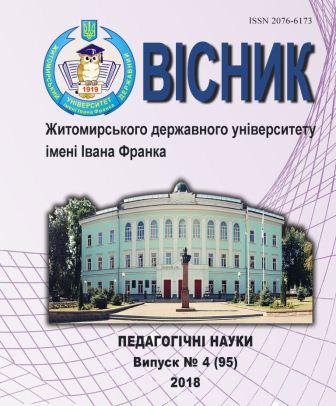Наукові підходи у підготовці майбутніх юристів до професійної взаємодії
DOI:
https://doi.org/10.35433/pedagogy.4(95).2018.41-44Keywords:
вища освіта, підготовка юристів, професійна взаємодія наукові підходи, системний, особистісно-орієнтований, аксіологічний, компетентнісний, діяльніснийAbstract
В результаті дослідження проблеми формування готовності майбутнього юриста до професійної взаємодії встановлено, що можливість системного вивчення процесу підготовки та розробки її моделі у формуванні особистості сучасного майбутнього юриста, забезпечується цілісністю та системністю цього процесу через реалізацію наступних наукових підходів, а саме: особистісно-орієнтованого, аксіологічного, компетентнісного та діяльнісного підходів. З’ясовано, що в результаті застосування вищезгаданих наукових підходів формуються важливі як і особистісні якості майбутнього фахівцяюриста, так і його професійні знання, вміння та навички, зокрема: активність, творчість, самовдосконалення, орієнтація в етичних, моральних та правових цінностях.References
Педагогічні технології : [навчальний посібник для вузів] / [Нісімчук А. М., Падалка О. С., Смолюк І. О., Шпак О. Т.]. – К. : Видавництво ''Українська енциклопедія'' ім. М. П. Бажана, 1995. – 234 с.
''Правила поведінки та професійної етики осіб рядового та начальницького складу органів внутрішніх справ України'' [Електронний ресурс]. – Режим доступу : https://f3.naiau.kiev.ua/pravyla-povedinky-prof-etika.html.
Циба В. Аналіз понять теорії особистості: соціальна настанова, соціальна установка, атитюд [Електронний ресурс] / В. Циба. – Режим доступу : http://www.vmurol.com.ua/index.php idd=us_publication&group=4&us_publication=665.
Downloads
Issue
Section
License
Copyright (c) 2019 О. І. Браткова

This work is licensed under a Creative Commons Attribution-NonCommercial-NoDerivatives 4.0 International License.
Authors published in this journal agree to the following terms:
a) The authors reserve the right to author their work and grant the journal the right to first publish this work under the Creative Commons Attribution License, which allows others to freely distribute the published work with a mandatory link to the authors of the original work and the first publication of the work therein magazine.
b) Authors have the right to enter into separate additional agreements regarding the non-exclusive distribution of the work in the form in which it was published by this journal (for example, posting work in an electronic repository of the institution or publishing as part of a monograph), provided that the reference to the first publication of the work is maintained therein. magazine.
c) Journal policy permits and encourages the submission of manuscripts by the authors on the Internet (for example, in repositories of institutions or on personal websites), both prior to submitting this manuscript to the editorial board and as it contributes to the emergence of productive scientific discussion, and has a positive impact on the promptness and dynamics of citing a published work (see The Effect of Open Access).


 ISSN
ISSN 





